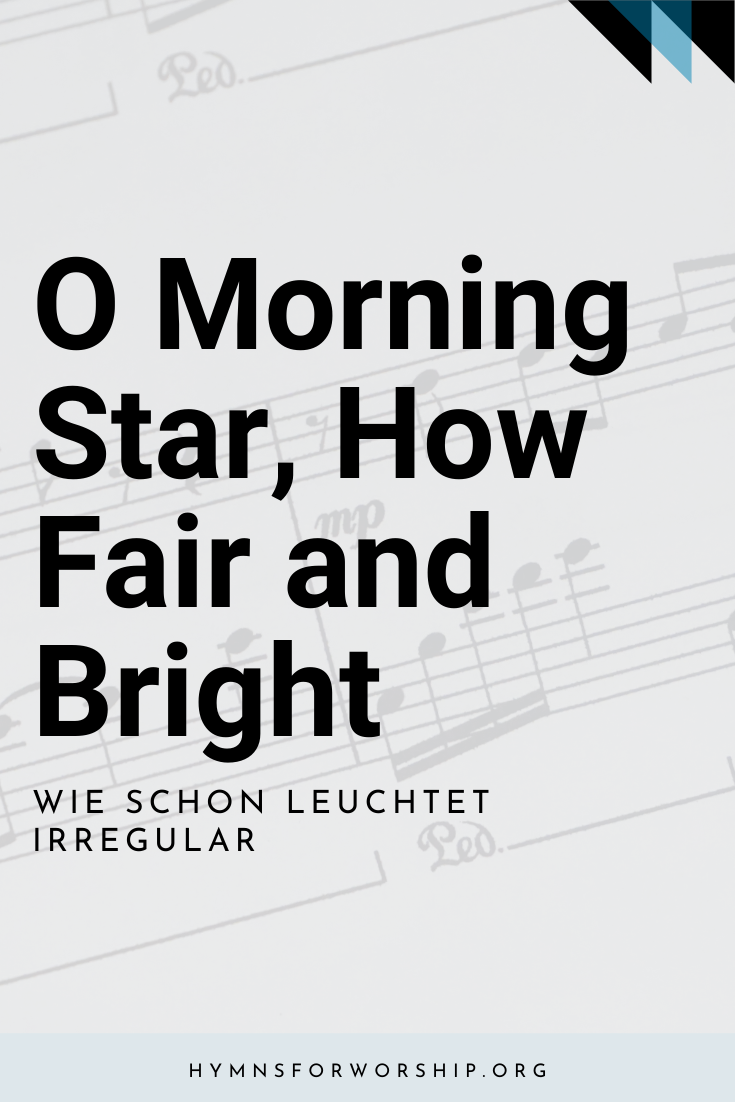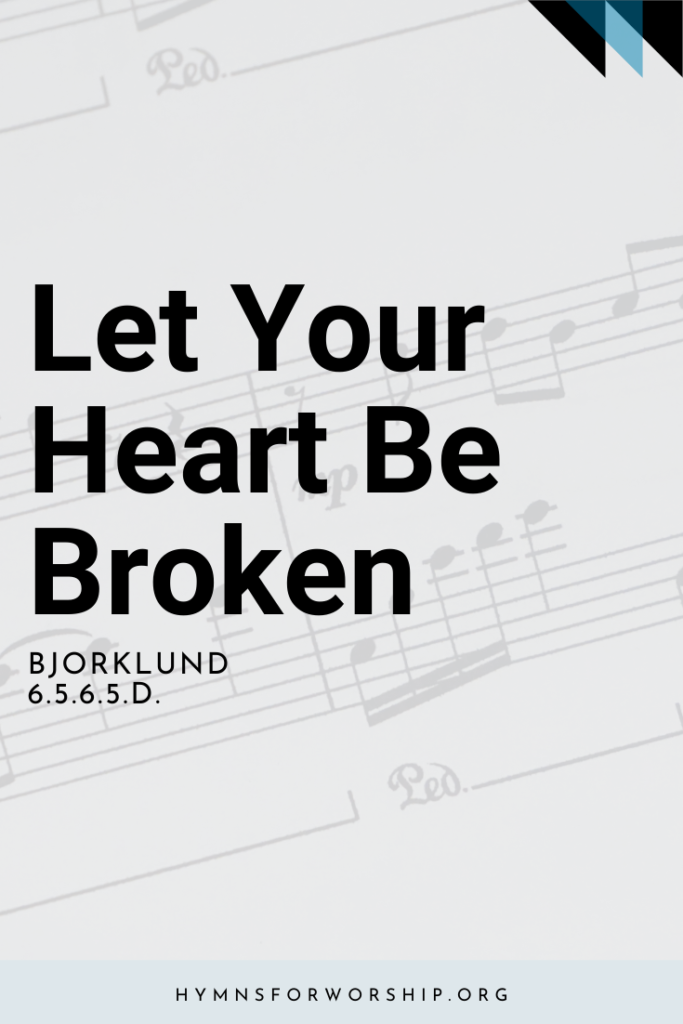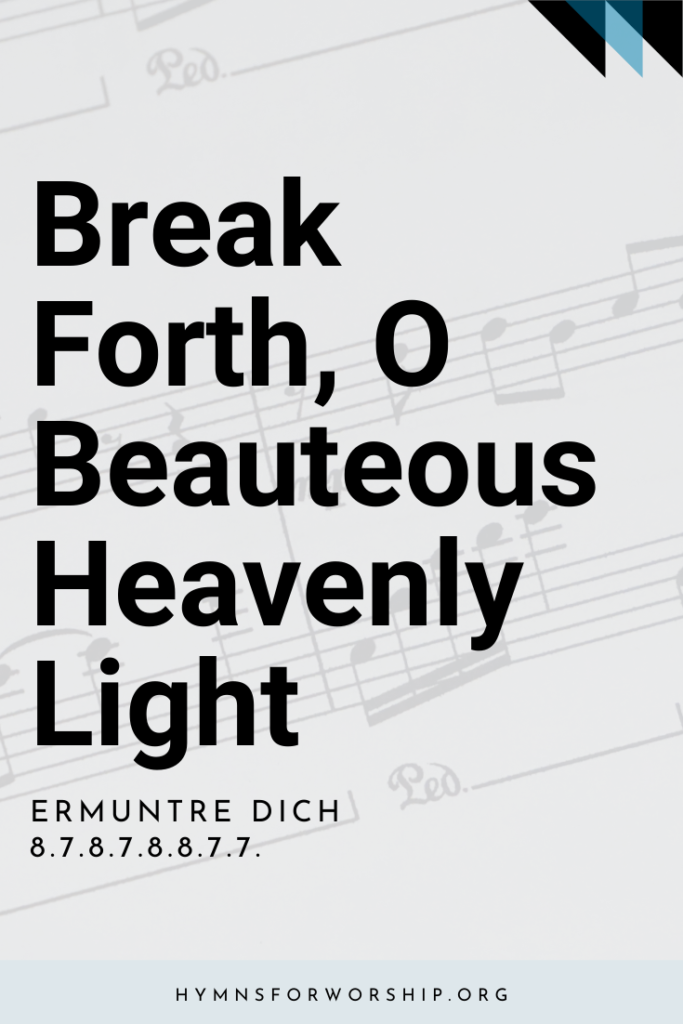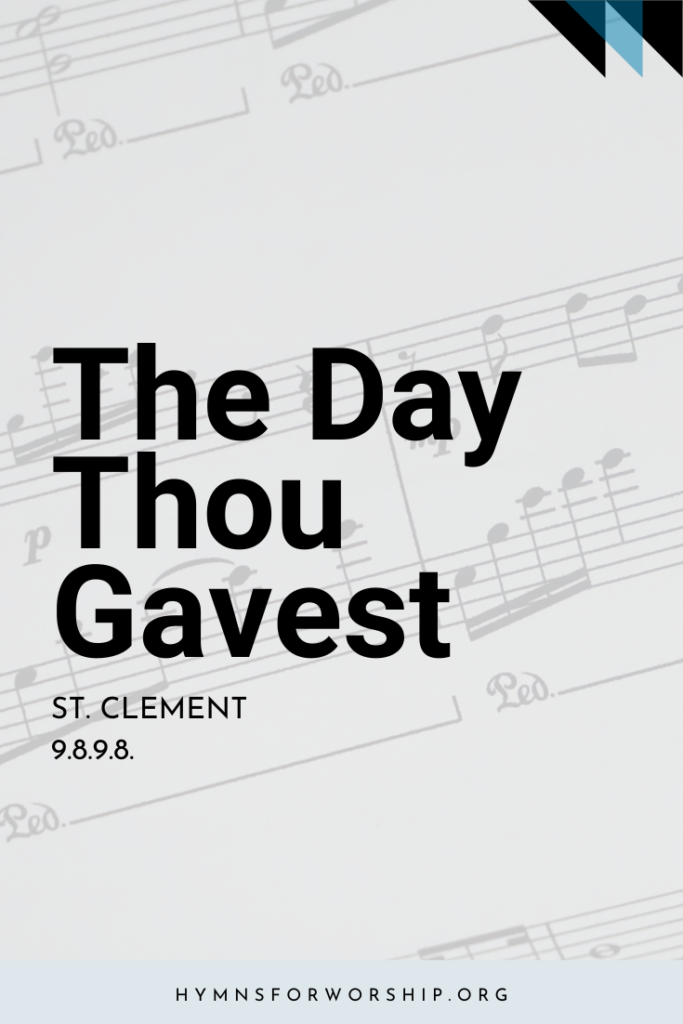WORSHIP >> Adoration & Praise
SDAH 18
O Morning Star, how fair and bright!
You shine with God’s own truth and light,
Aglow with grace and mercy!
Of Jacob’s race, King David’s son,
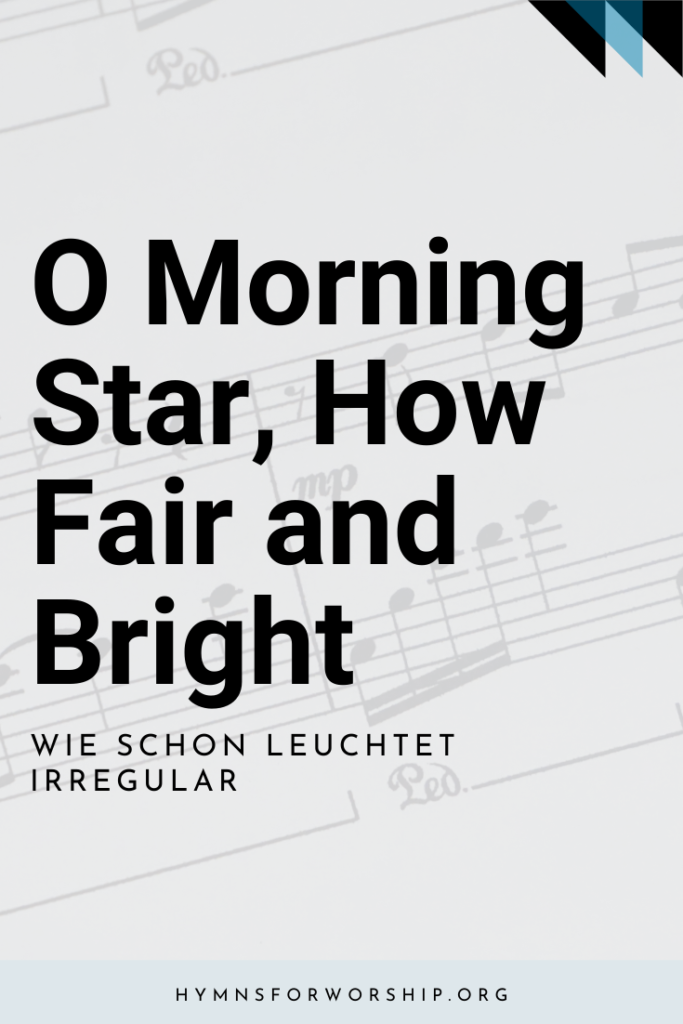

Get the hymn sheet in other keys here
For Worship Leaders
Make each hymn more meaningful with these helpful tools: Short, ready-to-use hymn introductions for church bulletins, multiple ways to introduce a hymn based on your worship theme and in-depth history and insights to enrich your song service.
Hymn Spotlight: O Morning Star, How Fair and Bright
Known as the “Queen of the Chorales”, this hymn is one of the greatest treasures of Lutheran hymnody. Both the text and tune were written by Philipp Nicolai in 1599 during a time of great suffering. While pastoring in Unna, Germany, he witnessed a deadly plague sweep through his town. Yet in the midst of grief, his heart turned to God, and from that sorrow came this radiant hymn—filled with joy, hope, and a longing for Christ, the true Morning Star.
Inspired by Psalm 45, this hymn speaks of the believer’s love for Christ as the heavenly Bridegroom. Over the centuries, it became widely sung at weddings and church celebrations, a testimony to its enduring beauty and message of devotion. The majestic tune, WIE SCHÖN LEUCHTET, has been beloved by musicians for generations, even inspiring J.S. Bach, who used it in multiple cantatas and organ works.
As we sing today, may our hearts be lifted in praise to Christ, “our joy and crown, our sun and treasure,” the One who shines in the darkness and fills our lives with light!


Text
1
O Morning Star, how fair and bright!
You shine with God’s own truth and light,
Aglow with grace and mercy!
Of Jacob’s race, King David’s son,
Our Lord and Master, You have won
Our hearts to serve You only!
Lowly, holy!
Great and Glorious, all victorious,
Rich in blessing! Rule and might o’er all possessing!
2
Lord, when you look on us in love,
At once there falls from God above
A ray of purest pleasure.
Your Word and Spirit, flesh and blood,
Refresh our souls with heav-‘nly food.
You are our dearest treasure!
Let Your mercy warm and cheer us!
O draw near us! For You teach us
God’s own love through You has reached us.
3
Almighty Father, in Your Son
You loved us, when not yet begun
Was this old earth’s foundation!
Your Son has ransomed us in love
To live in Him here and above:
This is Your great salvation.
Alleluia! Christ the living,
To us giving life forever,
Keeps us Yours and fails us never!
4
O let the harps break forth in sound!
Our joy be all with music crowned,
Our voices gaily blending!
For Christ goes with us all the way –
Today, tomorrow, every day!
His love is never ending!
Sing out! Ring out!
Jubilation! Exultation!
Tell the story!
Great is He, the King of glory!

Hymn Info
Biblical Reference
(a) Rev 22:16 (b) Rev 21:2, John 15:5 (c) Rev 13:8 (d) Rev 22:13, 20 (e) Heb 13:8, Jer 31:3, Ps 24:10
Author
Philip Nicolai (1556-1608)
Translation
Lutheran Book of Worship
Year Published
1978
Copyright
Words copyright 1978 Lutheran Book of Worship. Used by permission of Augsburg Publishing House. Setting from Orgelchoralbuch Wurtemberg.
Hymn Tune
WIE SCHON LEUCHTET
Metrical Number
Irregular
Composer
Philip Nicolai (1556-1608)
Arranger
J.S. Bach (1685-1750)
Theme
ADORATION & PRAISE

